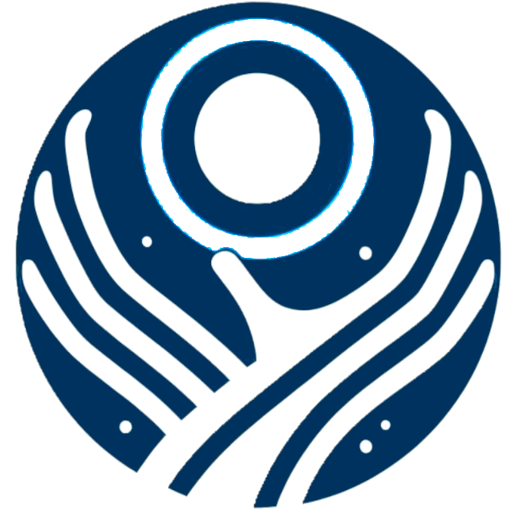Sarah was only 42 when a sudden stroke left her unable to speak or move her right arm. Her doctors prepared her family for the possibility that these functions might never fully return. Yet six months later, Sarah was speaking clearly and had regained most of her arm movement. Her neurologist explained that her brain had essentially rewired itself, creating new neural pathways to replace the damaged ones.
Content
- The Brain’s Natural Healing Abilities
- Neuroplasticity and Neurogenesis
- Common Brain Injuries and Conditions
- Factors That Promote Brain Repair
- Emerging Therapies and Research
- Lifestyle Changes for Brain Health
This remarkable ability—the brain’s capacity to repair and reorganize itself—is something we’re only beginning to fully understand. Brain repair refers to the processes through which our brains recover from injury, adapt to changes, and even regenerate certain components. While we once believed the adult brain was fixed and unchangeable, decades of research have revealed its astonishing resilience and adaptability.
Understanding brain repair isn’t just fascinating science—it’s crucial knowledge that impacts millions of people suffering from brain injuries, neurological disorders, and mental health conditions. The good news is that cutting-edge research is constantly expanding our understanding of how to support and enhance the brain’s natural healing abilities.
This article explores the remarkable ways our brains heal themselves, what factors promote repair, and how we can actively protect and strengthen our most complex organ. The message is one of hope: our brains are more resilient than we once thought, and there’s much we can do to support their health and healing.
The Brain’s Natural Healing Abilities
Neuroplasticity: The Adaptable Brain
At the core of brain repair is neuroplasticity—the brain’s ability to reorganize itself by forming new neural connections throughout life. This process allows neurons (brain cells) to compensate for injury and adjust to new situations or changes in the environment.
Imagine a busy highway suddenly closed by construction. Traffic doesn’t simply stop—it finds alternate routes. Similarly, when brain pathways are damaged, neuroplasticity enables the brain to reroute signals along different neural networks. This is precisely what happens after a stroke when undamaged parts of the brain take over functions previously managed by the damaged areas.
Neuroplasticity also explains how we learn new skills. Whether you’re mastering a musical instrument or learning a new language, your brain physically changes as you practice, strengthening connections between neurons involved in that skill. The phrase “neurons that fire together, wire together” captures this process perfectly: repeated activation of certain neural pathways strengthens those connections.
Neurogenesis: Growing New Brain Cells
Perhaps even more remarkable is neurogenesis—the creation of new neurons. For most of the 20th century, scientists believed humans were born with all the brain cells they would ever have. We now know the brain can generate new neurons throughout life, particularly in the hippocampus, a region crucial for learning and memory.
While neurogenesis doesn’t occur equally throughout the brain, this discovery has profound implications for brain repair. Research suggests that neurogenesis can be stimulated by physical exercise, mental stimulation, and certain dietary factors. In animal studies, increased neurogenesis has been linked to improved memory and learning capacity.
The Support System: Glial Cells
Neurons may get most of the attention, but they’re supported by various types of glial cells that play crucial roles in brain repair:
- Astrocytes: These star-shaped cells help control the brain’s blood flow, provide nutrients to neurons, and participate in repair after injury by forming scar tissue that contains damage.
- Microglia: Acting as the brain’s immune defense, microglia clear away dead cells and debris after injury, essentially “cleaning up” damaged areas to make way for repair.
- Oligodendrocytes: These cells produce myelin, the insulating material that covers nerve fibers and speeds signal transmission. After injury, new oligodendrocytes can form to help remyelinate damaged nerves.
Together, these support cells create an environment that protects neurons and facilitates recovery after injury.

Common Brain Injuries and Conditions
Traumatic Brain Injury (TBI)
Traumatic brain injuries range from mild concussions to severe trauma. They typically result from a blow to the head, violent shaking, or penetrating injuries. Symptoms vary widely but can include headaches, confusion, memory problems, mood changes, and cognitive difficulties.
Recovery from TBI depends on the severity of the injury, the individual’s age and overall health, and the quality of care received. While some effects may be permanent, many patients show significant improvement over time as their brains adapt and create new neural pathways. A personalized rehabilitation program typically works best, potentially including physical therapy, occupational therapy, speech therapy, and cognitive retraining.
Stroke
During a stroke, blood flow to part of the brain is interrupted, depriving brain cells of oxygen and nutrients. Without oxygen, affected brain cells begin to die within minutes. Depending on which brain area is affected, strokes can impair movement, speech, memory, or other functions.
Remarkably, many stroke survivors regain some or most of their lost abilities. Initially, this improvement comes from reduced swelling and healing of temporarily damaged tissue. Later recovery, which can continue for months or even years, reflects neuroplasticity in action—the brain reorganizing itself to compensate for damaged areas.
Research shows that early intervention and intensive rehabilitation significantly improve outcomes. Constraint-induced movement therapy, for example, forces the use of affected limbs, encouraging the brain to rebuild pathways controlling those limbs.
Neurodegenerative Diseases
Conditions like Alzheimer’s and Parkinson’s disease involve the progressive loss of neurons. While these diseases remain incurable, research into brain repair mechanisms offers hope for future treatments.
Studies explore ways to enhance the brain’s natural repair processes or introduce external factors (like stem cells) to replace lost neurons. For example, researchers are investigating how to stimulate neurogenesis in the hippocampus, potentially slowing memory decline in Alzheimer’s patients.
Until cures are found, treatments focus on managing symptoms and slowing disease progression. Importantly, many of the lifestyle factors that support brain repair (like exercise and cognitive stimulation) may also help delay symptom onset or progression in these conditions.
Mental Health Conditions
Depression, anxiety, PTSD, and other mental health conditions involve measurable changes in brain function and structure. Chronic stress and depression, for instance, can reduce the volume of certain brain regions and impair neurogenesis.
The good news is that effective treatments can reverse some of these brain changes. Studies show that both psychotherapy and certain medications can normalize brain activity patterns and even restore volume in key regions like the hippocampus. Meditation and mindfulness practices also appear to strengthen connections in brain areas that regulate emotions and stress responses.
These findings highlight that mental health treatment isn’t just about feeling better—it’s literally helping to repair and restructure the brain.
Factors That Promote Brain Repair
Nutrition: Feeding Your Brain
The brain is an energy-hungry organ, consuming about 20% of the body’s calories despite being only 2% of its weight. Providing the right nutrients supports its repair processes:
- Omega-3 fatty acids (found in fatty fish, walnuts, and flaxseeds) are essential components of neuron membranes and promote anti-inflammatory processes in the brain.
- Antioxidants (abundant in colorful fruits and vegetables) protect brain cells from oxidative stress and damage.
- B vitamins support myelin production and neurotransmitter synthesis.
- Protein provides the amino acids needed to build neurotransmitters and repair tissues.
Research increasingly supports the Mediterranean diet—rich in vegetables, fruits, olive oil, fish, and whole grains—for optimal brain health and function.
Exercise: Moving for Mind Repair
Physical activity might be the single most effective way to promote brain repair and health. Exercise increases blood flow to the brain, delivering more oxygen and nutrients. It also stimulates the release of growth factors like BDNF (Brain-Derived Neurotrophic Factor), which supports neuroplasticity and neurogenesis.
Studies show that regular aerobic exercise increases hippocampal volume and improves memory and cognitive function. Even in people with existing brain injuries or neurodegenerative conditions, exercise appears to slow deterioration and support functioning.
You don’t need to become a marathon runner—moderate activities like brisk walking, swimming, or cycling for 30 minutes most days provide significant benefits.
Sleep: Restoration in Slumber
Sleep is the brain’s maintenance time, when toxins are cleared and memories are consolidated. During deep sleep, the brain’s glymphatic system—a recently discovered waste-clearance system—becomes more active, removing proteins like beta-amyloid that are associated with Alzheimer’s disease.
Sleep deprivation impairs nearly all aspects of brain function and may interfere with repair processes. Adults should aim for 7-9 hours of quality sleep. If you struggle with sleep, consider:
- Maintaining a consistent sleep schedule
- Creating a restful bedroom environment
- Limiting screen time before bed
- Avoiding caffeine and alcohol near bedtime
Stress Management: Protecting Against Damage
While acute stress can be motivating, chronic stress damages the brain. Stress hormones like cortisol can kill neurons in the hippocampus and impair neurogenesis.
Effective stress reduction techniques include:
- Meditation and mindfulness practices, which strengthen neural pathways involved in attention and emotional regulation
- Yoga and tai chi, which combine movement, breathing, and meditation
- Time in nature, which reduces stress hormones and improves mood
- Creative activities like art, music, or journaling
- Social connection, which buffers against stress effects
Even brief daily stress-reduction practices can help protect your brain from the damaging effects of chronic stress.
Cognitive Stimulation: Use It or Lose It
Mental exercise strengthens neural connections just as physical exercise strengthens muscles. Learning new skills, solving problems, and engaging in novel activities all promote neuroplasticity.
Activities that combine mental challenge, learning, and social interaction provide maximum benefit. Examples include:
- Learning a new language or musical instrument
- Taking up a new hobby that requires concentration and skill development
- Playing strategy games or solving puzzles
- Reading challenging material and discussing it with others
- Taking courses in unfamiliar subjects
Variety is key—pushing your brain to adapt to new challenges continually builds cognitive reserve, which helps protect against age-related decline and enhances recovery from injury.
Social Connection: The Relationship Factor
Humans are social creatures, and our brains reflect this. Rich social connections are associated with better cognitive function, slower cognitive decline with aging, and reduced dementia risk.
Social interaction provides complex cognitive stimulation while also reducing stress and improving mood. For those recovering from brain injuries, social support can significantly improve outcomes by providing emotional support, practical assistance, and motivation for rehabilitation efforts.
Emerging Therapies and Research
Stem Cell Therapy
Stem cells have the remarkable ability to develop into many different cell types in the body. Researchers are exploring their potential to replace damaged neurons or support existing cells.
Early clinical trials show promise for conditions like stroke and spinal cord injury. While challenges remain in ensuring these cells integrate properly into existing brain circuits, stem cell research represents one of the most exciting frontiers in brain repair.
Brain Stimulation Techniques
Technologies like Transcranial Magnetic Stimulation (TMS) and transcranial Direct Current Stimulation (tDCS) can modulate brain activity non-invasively:
- TMS uses magnetic fields to activate specific brain regions and has FDA approval for treating depression and migraines.
- tDCS applies weak electrical currents to the scalp, potentially enhancing neuroplasticity during rehabilitation.
These technologies are being studied for various applications, from stroke rehabilitation to cognitive enhancement and treatment of neurological disorders.
Neurofeedback
Neurofeedback allows people to observe and gradually modify their own brain activity. Using EEG or functional MRI, patients receive real-time feedback about their brain states and learn to regulate them.
Applications include treatment for ADHD, anxiety, PTSD, and rehabilitation after brain injury. By reinforcing healthier brain activity patterns, neurofeedback may help the brain “relearn” optimal functioning.
Exoskeletons and Robotics
Robotic devices can help patients with brain injuries regain movement by supporting weakened limbs and providing controlled, repetitive motion. This assisted movement stimulates neuroplasticity in motor control areas of the brain.
Advanced systems now incorporate brain-computer interfaces that read neural signals, allowing patients to control robotic limbs through thought alone—and potentially retraining damaged neural circuits in the process.
Digital Therapeutics
Specialized apps and computer programs are being developed to target specific cognitive functions affected by brain injury or disease. These digital tools provide structured, intensive training that’s often more engaging than traditional exercises.
For example, virtual reality systems can create immersive environments for stroke patients to practice movements or for PTSD patients to safely confront and process traumatic memories.
Lifestyle Changes for Brain Health
The most powerful approaches to supporting brain repair combine multiple positive factors:
- Eat a brain-healthy diet rich in vegetables, fruits, healthy fats, and lean proteins
- Exercise regularly, aiming for at least 150 minutes of moderate activity weekly
- Prioritize quality sleep by establishing good sleep habits
- Manage stress through mindfulness, relaxation techniques, and setting reasonable boundaries
- Stay mentally active by continually learning and challenging yourself
- Nurture social connections through regular meaningful interactions
- Minimize alcohol consumption and avoid smoking and recreational drugs
- Protect your head by wearing appropriate safety gear for sports and activities
Even small changes in these areas can significantly impact brain health. Start with one or two manageable changes rather than attempting a complete lifestyle overhaul at once.
Remember that it’s never too early—or too late—to support your brain’s health. The brain remains adaptable throughout life, and positive changes at any age can yield benefits.
Its a Journey
The science of brain repair offers profound hope. Our brains are not static organs destined to decline with age or injury but dynamic systems with remarkable capacity for change, adaptation, and even regeneration.
While we can’t control every factor affecting brain health, we have significant influence over many aspects through our daily choices. The same approaches that support brain repair after injury also help maintain healthy brain function and potentially reduce the risk of future problems.
Whether you’re recovering from a brain injury, managing a neurological condition, or simply wanting to protect your cognitive health, understanding and supporting your brain’s natural repair processes is a powerful step. By combining evidence-based lifestyle approaches with appropriate medical care, you can partner with your remarkable brain in its journey toward healing and optimal function.
The message is clear: our brains are more resilient than we once thought, and with the right support, have astounding potential to heal, adapt, and thrive.









